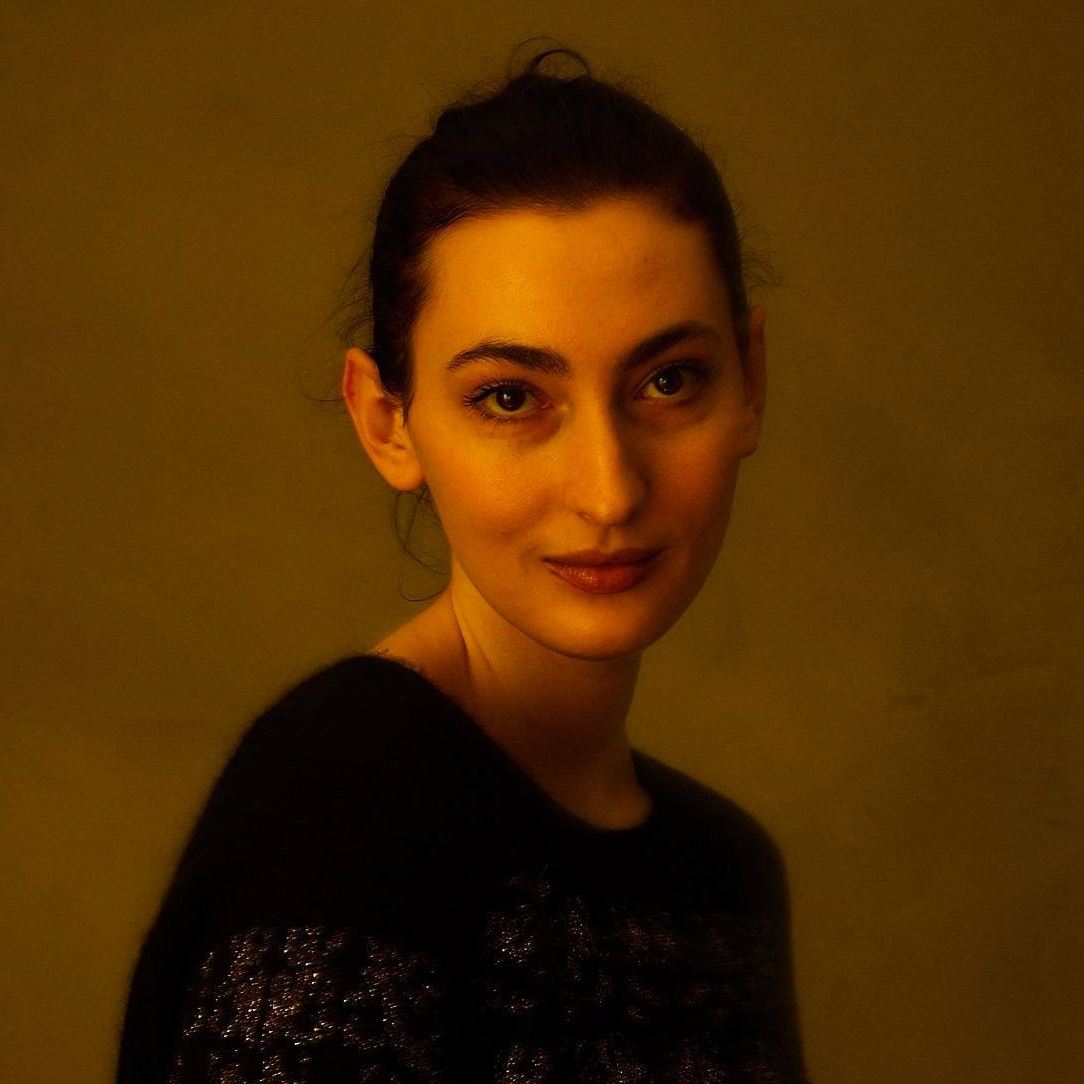A woman reaches her face up toward a marble statue to press her lips to his in a cold kiss. The blush of her cheeks, and the softness of the fur that adorns her, heightens the contrast with the pale, rigid stone. Sheila Metzner photographed this sce...




